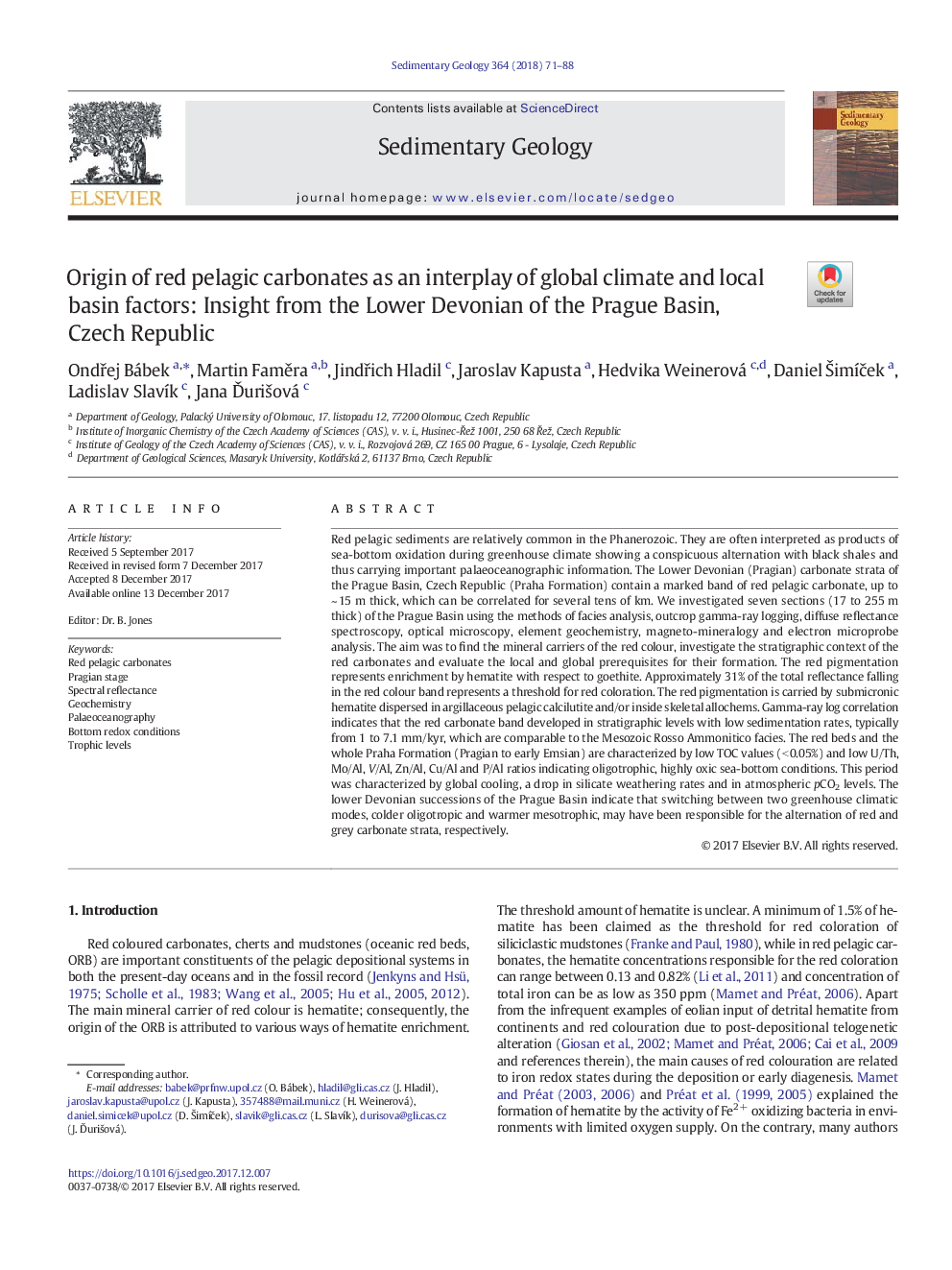| کد مقاله | کد نشریه | سال انتشار | مقاله انگلیسی | نسخه تمام متن |
|---|---|---|---|---|
| 8908546 | 1635999 | 2018 | 18 صفحه PDF | دانلود رایگان |
عنوان انگلیسی مقاله ISI
Origin of red pelagic carbonates as an interplay of global climate and local basin factors: Insight from the Lower Devonian of the Prague Basin, Czech Republic
دانلود مقاله + سفارش ترجمه
دانلود مقاله ISI انگلیسی
رایگان برای ایرانیان
کلمات کلیدی
موضوعات مرتبط
مهندسی و علوم پایه
علوم زمین و سیارات
فرآیندهای سطح زمین
پیش نمایش صفحه اول مقاله

چکیده انگلیسی
Red pelagic sediments are relatively common in the Phanerozoic. They are often interpreted as products of sea-bottom oxidation during greenhouse climate showing a conspicuous alternation with black shales and thus carrying important palaeoceanographic information. The Lower Devonian (Pragian) carbonate strata of the Prague Basin, Czech Republic (Praha Formation) contain a marked band of red pelagic carbonate, up to ~Â 15Â m thick, which can be correlated for several tens of km. We investigated seven sections (17 to 255Â m thick) of the Prague Basin using the methods of facies analysis, outcrop gamma-ray logging, diffuse reflectance spectroscopy, optical microscopy, element geochemistry, magneto-mineralogy and electron microprobe analysis. The aim was to find the mineral carriers of the red colour, investigate the stratigraphic context of the red carbonates and evaluate the local and global prerequisites for their formation. The red pigmentation represents enrichment by hematite with respect to goethite. Approximately 31% of the total reflectance falling in the red colour band represents a threshold for red coloration. The red pigmentation is carried by submicronic hematite dispersed in argillaceous pelagic calcilutite and/or inside skeletal allochems. Gamma-ray log correlation indicates that the red carbonate band developed in stratigraphic levels with low sedimentation rates, typically from 1 to 7.1Â mm/kyr, which are comparable to the Mesozoic Rosso Ammonitico facies. The red beds and the whole Praha Formation (Pragian to early Emsian) are characterized by low TOC values (<Â 0.05%) and low U/Th, Mo/Al, V/Al, Zn/Al, Cu/Al and P/Al ratios indicating oligotrophic, highly oxic sea-bottom conditions. This period was characterized by global cooling, a drop in silicate weathering rates and in atmospheric pCO2 levels. The lower Devonian successions of the Prague Basin indicate that switching between two greenhouse climatic modes, colder oligotropic and warmer mesotrophic, may have been responsible for the alternation of red and grey carbonate strata, respectively.
ناشر
Database: Elsevier - ScienceDirect (ساینس دایرکت)
Journal: Sedimentary Geology - Volume 364, February 2018, Pages 71-88
Journal: Sedimentary Geology - Volume 364, February 2018, Pages 71-88
نویسندگان
OndÅej Bábek, Martin FamÄra, JindÅich Hladil, Jaroslav Kapusta, Hedvika Weinerová, Daniel Å imÃÄek, Ladislav SlavÃk, Jana ÄuriÅ¡ová,